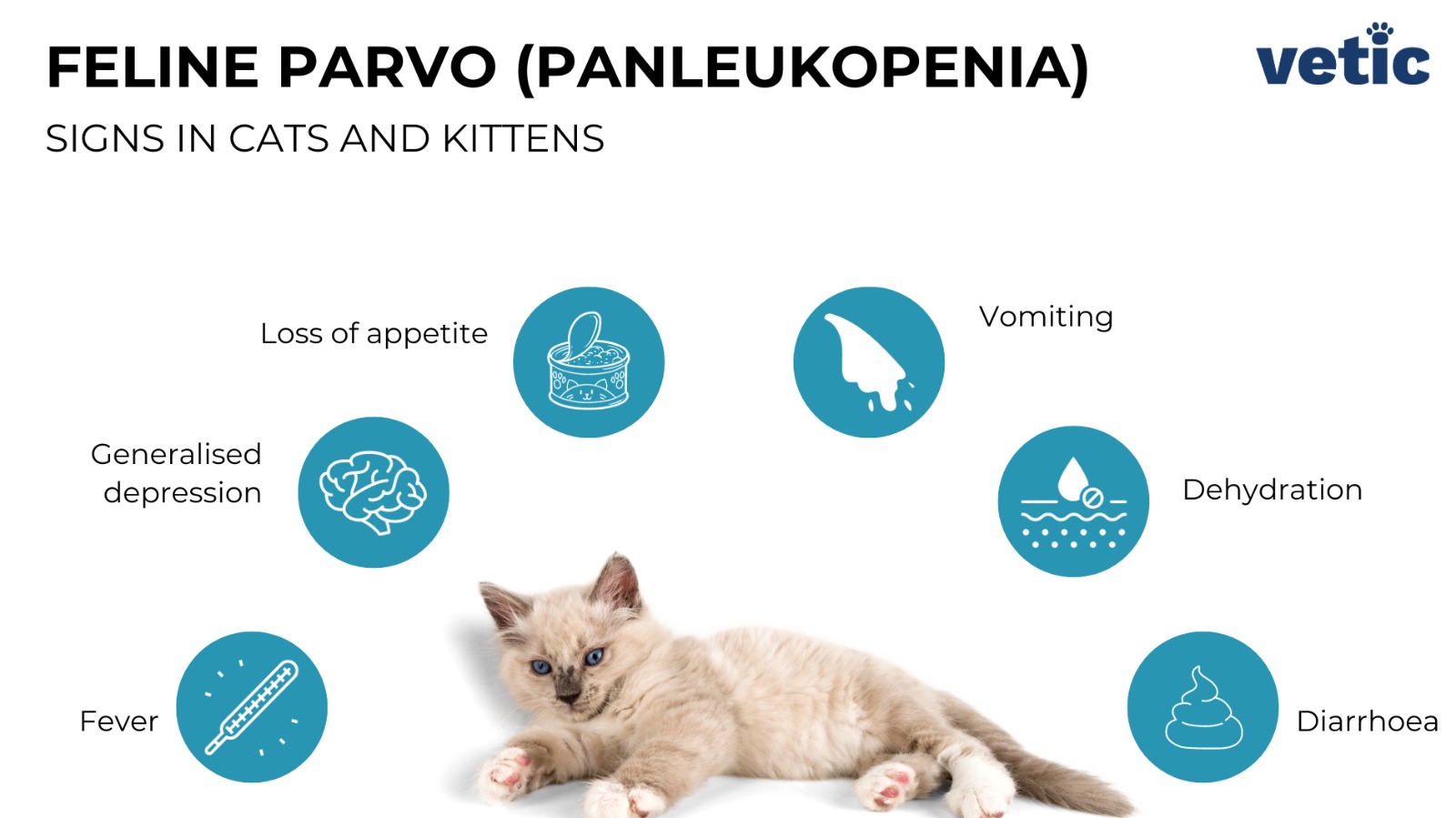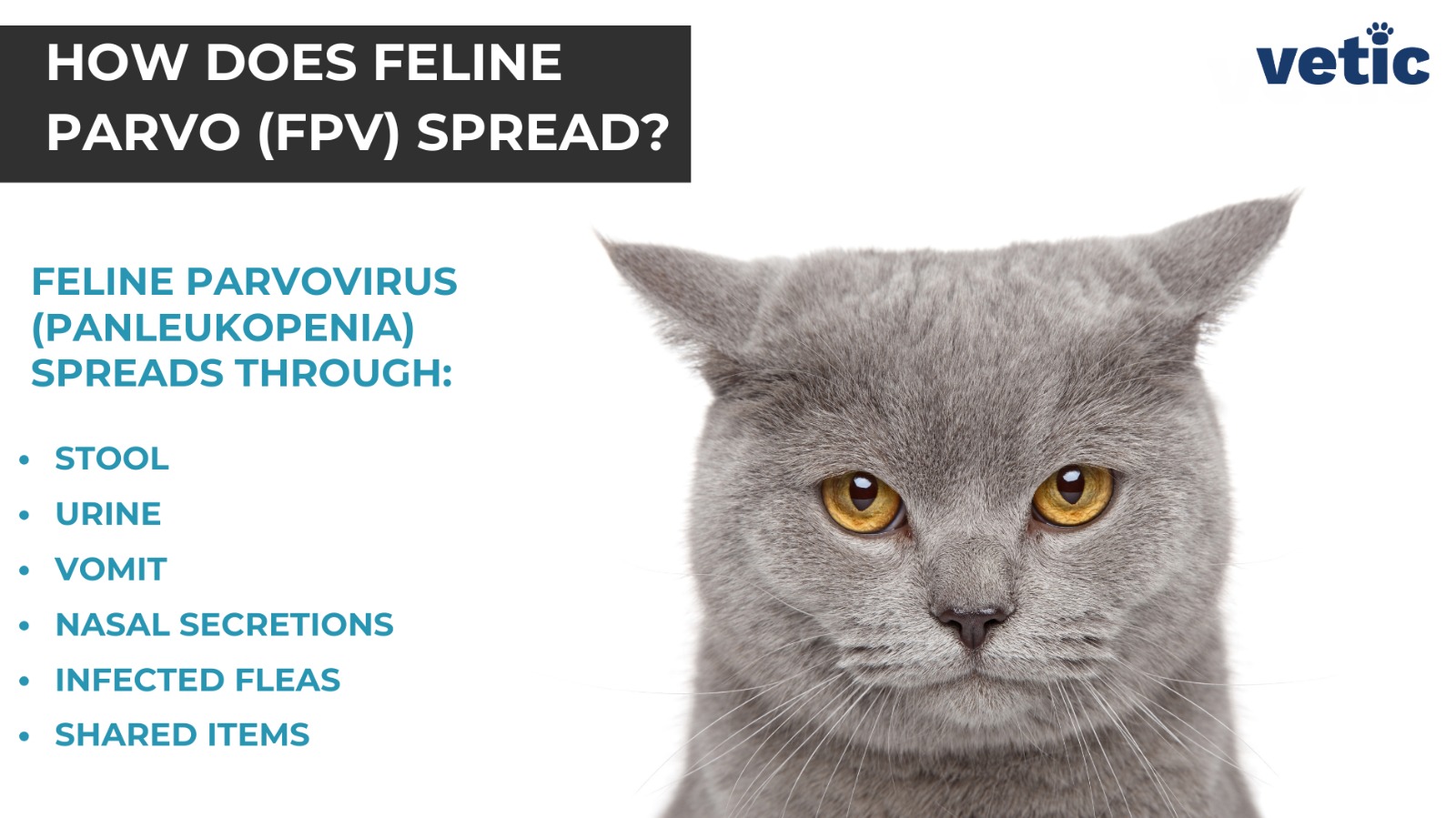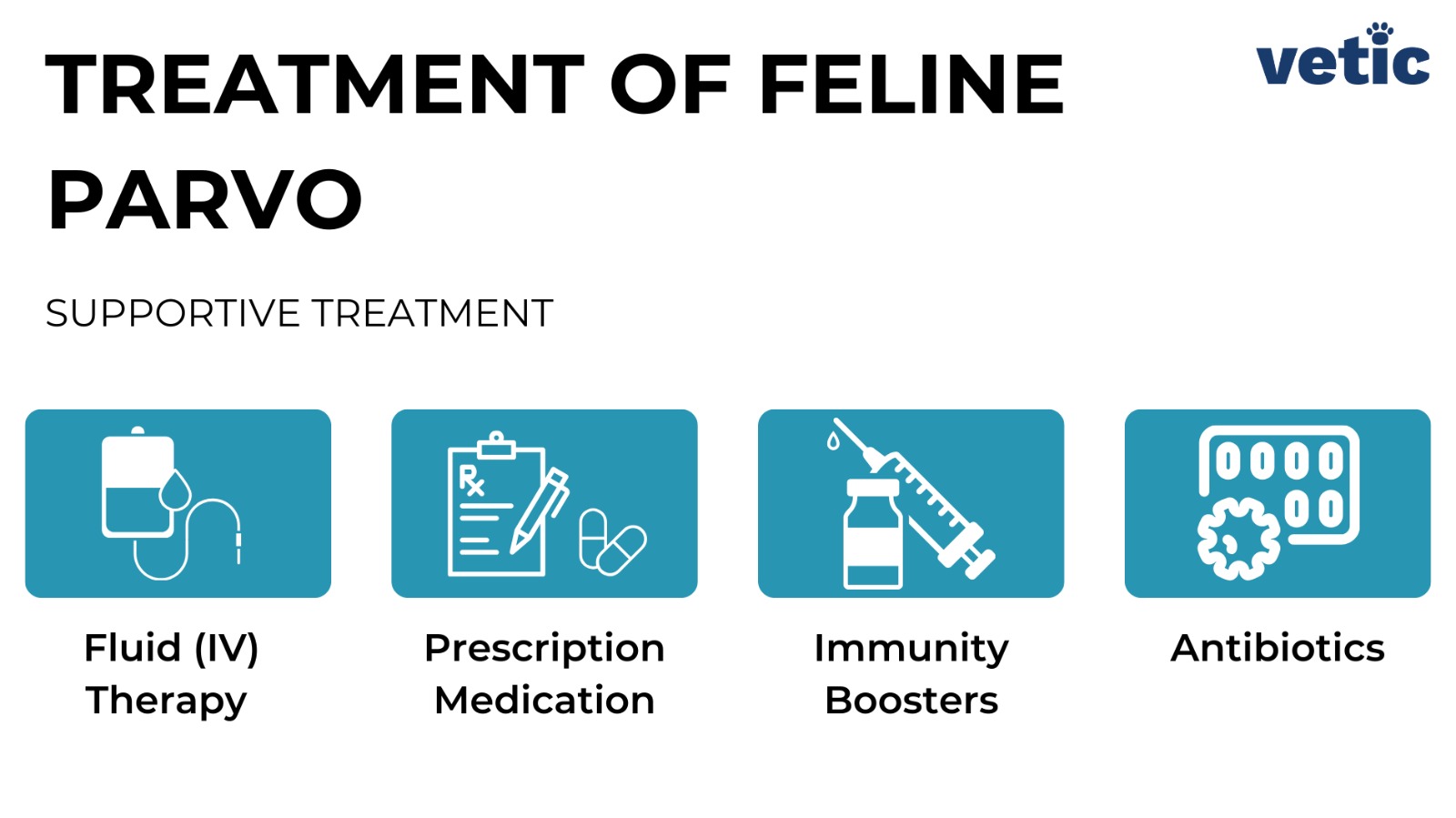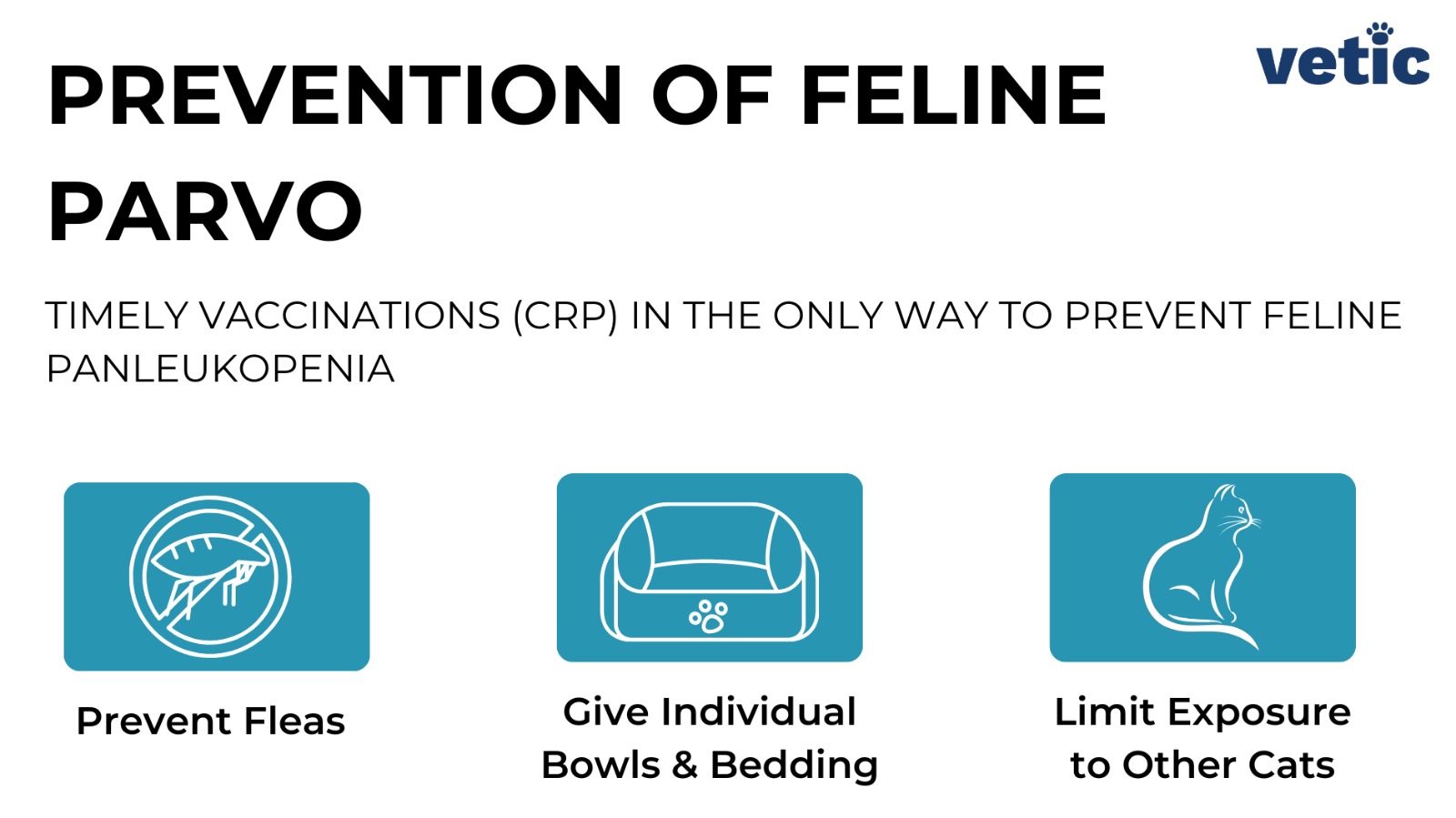What is parvo in cats, feline distemper or feline panleukopenia?
Feline panleukopenia or feline parvo is a deadly and highly contagious viral infection in cats. Kittens are generally worst affected by feline parvo. Fatality due to FPV (feline panleukopenia virus) infection is the highest among kittens.
Although feline panleukopenia (FP) is infrequent in most developed countries, it is quite common in Mumbai, Bengaluru, Kolkata and Delhi-NCR (India). A rising population of cats along with low CRP vaccination rates are the main contributors to the rising number of cases of feline parvo in these areas.
Feline panleukopenia virus (FPV) infects and destroys the fast-growing cells in the cat’s body – cells of the digestive tract and bone marrow, that produce the WBCs or immune cells.
If the cat is pregnant, FPV infection can cause abortions or severe deformities in the kittens. Kittens from mothers infected by FPV often show constant tremors due to cerebral ataxia (lack of movement coordination).
If you think your cat is behaving abnormally or showing lethargy and loss of appetite, rush them to the veterinarian near you immediately.
What are the signs of feline panleukopenia virus in cats?
The signs of feline panleukopenia or feline parvo can vary significantly depending on the cat’s age, coexisting health complications and vaccination status.

Feline panleukopenia or cat parvo in young kittens – signs & symptoms
Young kittens who have just stopped drinking their mother’s milk and haven’t been vaccinated yet are the ones worst affected.
Since their immune system isn’t fully developed yet and maternal antibodies are decreasing in number, they may not initially get a fever (peracute cases contribute to fading kitten syndrome). The early signs of panleukopenia in kittens include –
- Vomiting
- Diarrhoea
- Severe lethargy
- Low appetite
- Severe dehydration
- Sudden drop in body temperature
Kittens may not show all of these symptoms at the same time. Some kittens may not experience vomiting or diarrhoea before the sudden spike or drop in temperature. If your kitten doesn’t eat for longer than 12 hours, consult a veterinarian for a complete physical examination and diagnostic tests.
Feline panleukopenia in unvaccinated adult cats – signs & symptoms
Most adult cats show multiple generic signs of a viral infection. An infected adult cat may show the following panleukopenia symptoms –
- Generalised depression
- Loss of appetite
- High fever
- Vomiting
- Diarrhoea
- Discharge from the nose
- Dehydration
The fever comes and goes in most adult cats. The biggest risk is a cat’s body temperature going below normal (100.4-degrees to 102.5-degrees Fahrenheit).
If your cat is showing such symptoms, you need to quarantine them and see the veterinarian immediately. If you have reason to believe that your cat has FPV, mention it at the clinic beforehand so they can be treated in isolation and other cats aren’t exposed to the virus.
Which cats are likely to get feline panleukopenia or parvo?
Almost all cats are exposed to feline panleukopenia (FPV) during their lifetime. Any unvaccinated cat or kitten can get panleukopenia.
However, kittens are most susceptible to cat parvo due to their weak immune system. Collapse from FP is more common in kittens between the ages of 3 to 5 months.
Cats with chronic illnesses or immunodeficiency disorders are also highly susceptible to feline panleukopenia or parvo.
Cats and kittens who stay in shelters, boarding facilities, catteries and pet shops are highly susceptible to FP.
NOTE: If you are adopting a new cat or kitten, keep them in isolation for 10 days until their CRP vaccine.
How do cats get feline panleukopenia or parvo?

Cats can shed the cat parvovirus (feline panleukopenia virus) in –
- Stool
- Urine
- Vomit
- Nasal secretions
When uninfected or healthy cats come in contact with the stool, urine, vomit or nasal secretion of cats with panleukopenia, they can get the infection.
Uninfected cats can also get panleukopenia from fleas that have previously bitten an cat or kitten. with feline parvo. You need to apply spot-on for fleas on your cat every month (or as suggested by the vet) if they come in direct or indirect touch with other cats of unknown vaccination status.
Feline panleukopenia virus is very difficult to destroy or eliminate from environments. Any surface or object that has come into contact with the FPV infected cat can carry the virus for months (up to a year).
In fact, even human skin and clothes can carry the virus for a short period of time, which is enough to infect healthy cats.
Common household disinfectants cannot kill feline panleukopenia virus.
All infected cats should be quarantined. There should be no exchange of bowls, beddings, toys or clothes between the infected and healthy cats.
Lifecycle of feline parvo: How does parvo or panleukopenia affect the cat’s body and health?
The feline panleukopenia virus primarily targets the fast-growing cells, such as the intestines and bone marrow.
Once the virus reaches the digestive tract, it damages the cells and causes severe gastric distress. This typically includes foul smelling and bloody diarrhoea, and vomiting.
As a result, a feline parvovirus infected cat almost always stops eating within 24-48 hours of the first signs of the disease. Infected cats are typically taken off oral food and medication, and given intravenous fluid therapy and supportive treatment.
So, what’s the effect of feline panleukopenia? As the feline panleukopenia virus reaches the cat’s bone marrow, it damages the production of white blood cells (WBCs), which is a part of the immune system. WBCs are also known as leukocytes, and since the virus causes the suppression of the entire immune system the disease is called ‘panleukopenia’.
A cat suffering from feline parvo will be susceptible to other infections (typically, secondary bacterial infections) due to a compromised immune system.
Does your cat have feline panleukopenia: Diagnosis of parvo in cats
Feline panleukopenia diagnosis can be done via kit tests. It uses stool samples of the infected cats. However, kit tests can return false positive results if the cat has been vaccinated within 5 to 12 days of the test.
So, for panleukopenia diagnosis, your veterinarian will also take into account
- Your cat’s history of exposure to FPV
- Vaccination status
- Blood test reports
- Apparent signs of sickness
The signs of feline parvo can seem very similar to Salmonella infection, pancreatitis, or feline coronavirus. Hence, treatment depends upon the confirmed diagnosis by a veterinarian.
What is the treatment for feline panleukopenia or cat parvo?

There is no standardised treatment for feline parvo. Treatment of feline parvo depends on the signs the cat is showing.
There is currently no medication that can specifically target the panleukopenia virus. Supportive treatment and intensive care is mandatory so the cat remains healthy and strong to fight off the virus.
Please note: There is no natural or home remedy for feline panleukopenia or similar viral infections in cats.
Feline parvo almost always demands IV fluids along with medication to manage vomiting and nausea, and diarrhoea or bloody stool.
Although antibiotics cannot kill viruses, your cat will receive them so they don’t catch a bacterial infection while their immune system is compromised by the FPV infection.
Can cats survive panleukopenia: Survival rate and more
Without proper supportive care and treatment more than 90% of kittens do not recover. The prognosis for kittens infected with FP is poor to grave.
If a cat survives at least 5 days on supportive care and symptomatic treatment, their chances of survival become high.
Once a cat recovers from FPV they are likely to have immunity against feline parvo. Nonetheless, you need to isolate a cat who has just recovered from parvo since they can shed viral particles in their stool and urine for up to 7 days.
Our veterinarians at the Vetic Pet Clinic in Thane have treated several cases of feline panleukopenia in the recent times. Get in touch with our team to learn more about effective preventive care and management of highly infectious diseases in multi-cat households.
How can you prevent cat parvo or feline panleukopenia?

The only way to prevent feline parvo is by vaccinating your cat on time and as per schedule. Typically, kittens or newly adopted cats will receive 3 doses of the CRP vaccine, which will protect them from Feline Rhinotracheitis, Calici and Panleukopenia (FP) viruses.
Since the virus is resistant to multiple disinfectants, it is important to keep your indoor cats away from outdoor cats.
Keep your indoor cats free from fleas. Give them flea-repellents to prevent flea bites.
If you have new kittens, get them vaccinated (CRP) ASAP.
Here are some of the most frequently asked questions about feline panleukopenia:
What is feline panleukopenia or cat parvo?
Feline panleukopenia (FP), also known as cat parvo, is a highly contagious viral infection that primarily affects kittens, causing severe gastrointestinal and immune system damage.
What are the early signs of feline panleukopenia virus in cats?
Early signs include vomiting, diarrhea, lethargy, loss of appetite, dehydration, and fluctuating body temperature. Kittens may also exhibit tremors and hypothermia.
Can my cat get feline panleukopenia?
Any unvaccinated cat or kitten is susceptible. Kittens aged 3-5 months are most at risk due to weaker immune systems. Cats in shelters or boarding facilities are also vulnerable.
How do cats get feline panleukopenia or parvo?
Cats contract the virus through contact with infected bodily fluids like stool, urine, vomit, or nasal secretions. Fleas can also transmit the virus indirectly.
What is the effect of feline panleukopenia on a cat’s health?
FPV targets fast-growing cells in the intestines and bone marrow, causing severe gastrointestinal distress, immune suppression, and susceptibility to secondary infections.
Does my cat have feline panleukopenia? How is it diagnosed?
Diagnosis involves clinical signs, history of exposure, vaccination status, and sometimes blood tests or stool samples. Veterinary assessment is crucial due to similarities with other illnesses.
What is the treatment for feline panleukopenia or cat parvo?
Treatment focuses on supportive care: IV fluids, anti-nausea medications, and antibiotics to prevent secondary infections. There’s no specific antiviral medication.
Can cats survive panleukopenia?
Survival depends on early diagnosis and intensive care. Kittens have a lower survival rate (less than 10% without treatment), but supportive care significantly improves chances, especially after the critical first days.

